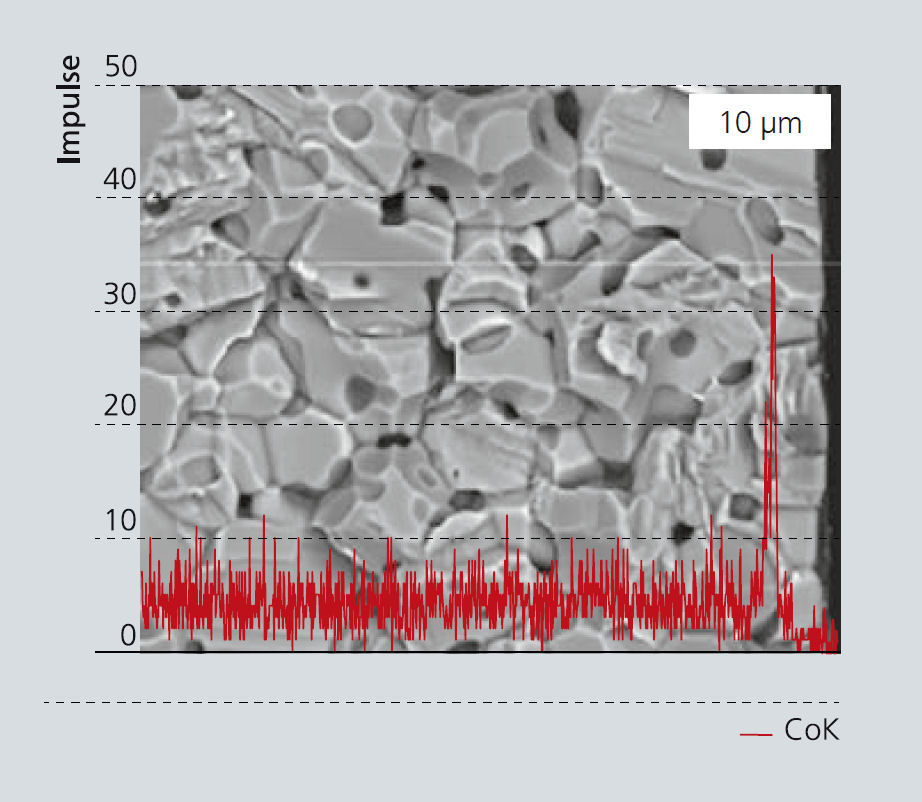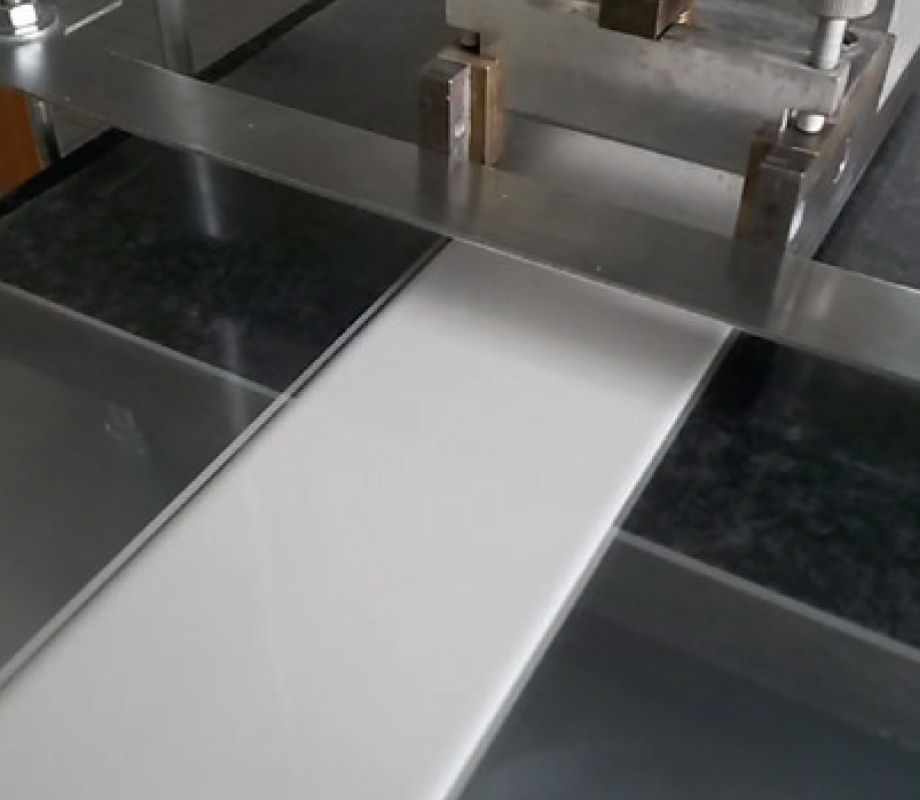
High-purity MgO tapes as sintering aid for MIEC ceramic flat membranes
Current research

Thanks to its excellent chemical, electrical and thermal properties, high-purity dense magnesia ceramic is highly suitable for extremely stressed components, for example in analytics, electronics, high-temperature or (when using transparent materials) optical applications. Fraunhofer IKTS is currently investigating another type of application: suitable temperature- and reactionresistant sintering aid is needed for the ion- and proton-conducting ceramic flat membranes developed at the institute on the basis of BSCF- (Ba-Sr-Co-Fe), CSFM- (Ca-Sr-Fe-Mn), La-Wolframat and Sr-Cereat materials. Such kiln furniture is not yet available with the quality required. The aim of the research project was therefore to develop the fundamental know-how for the material and technological basis of high-purity MgO ceramics for use as sintering aid.
Approach and results
The focus of the project was on specific preparation and shaping technologies for ceramic tapes of commercially available and highly pure (99,98 %) magnesia powders as well as PVB-based binder systems. The selection and characterization of these commercial highly pure and ultra-disperse magnesia powders with regard to their chemical purity, content of crystal phase and sintering behavior, as well as the analysis of dispersing power and castability, were key aspects. As a result, an MgO raw material with a purity > 99.98 % MgO, with pure periclase crystalline phase and a specific surface area (BET) of 7.9 m²/g was chosen for the magnesia development. Another fundamental aspect for the successful processing of thin-walled flat tapes was the development of suitable thermal processes for the debindering and sintering of these components. The aim was to achieve a crack-free homogeneous structure and distortion-free sintering. As a final step, the sintered MgO ceramic was characterized and its ability to serve as a reaction-stable sintering aid for ion-conducting ceramic flat membranes was reviewed. The diffusion of BSCF into the magnesia ceramic was shown to be very minor (Figure 1). Contact with the sintering aid did not lead to any changes in the composition of the BSCF ceramic. The examination of other materials systems for MIEC ceramic flat membranes has not concluded at the time of printing, but positive results may be expected.
Services offered
- Development of high-purity magnesia ceramic componentsfor customer-specific applications
- Development of shaping technologies and thermal processes
- Characterization of materials and components
- Realization of small-batch series

